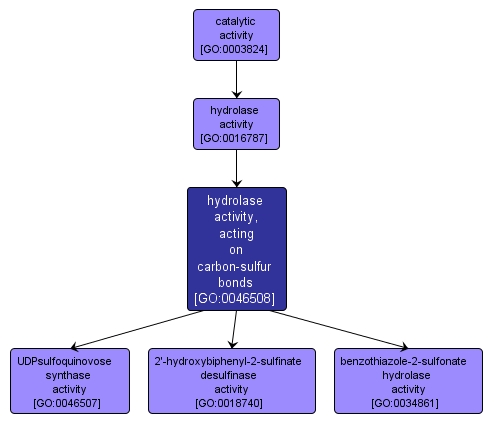GO TERM SUMMARY
|
| Name: |
hydrolase activity, acting on carbon-sulfur bonds |
| Acc: |
GO:0046508 |
| Aspect: |
Molecular Function |
| Desc: |
Catalysis of the hydrolysis of any carbon-sulfur bond, C-S. |
Synonyms:
- hydrolase activity, acting on carbon-sulphur bonds
|
|

|
INTERACTIVE GO GRAPH
|














